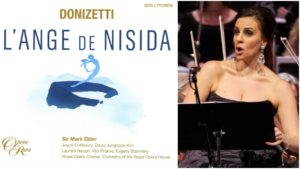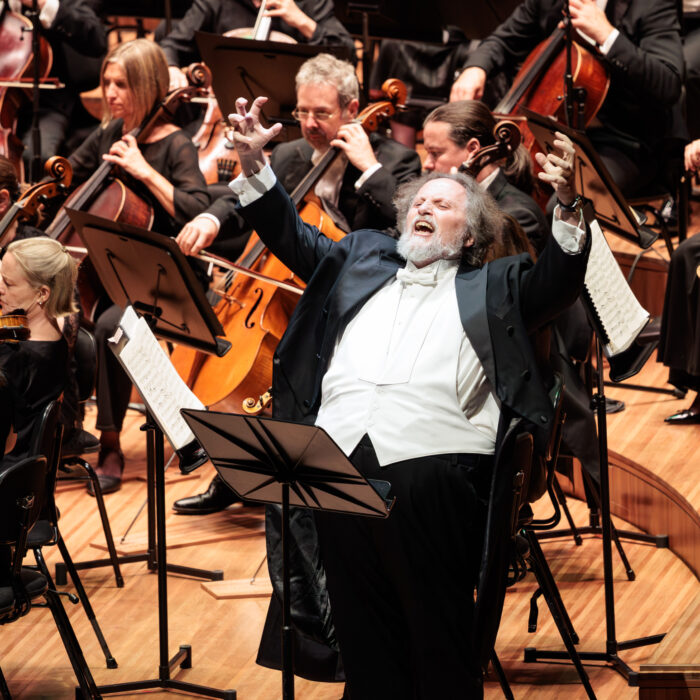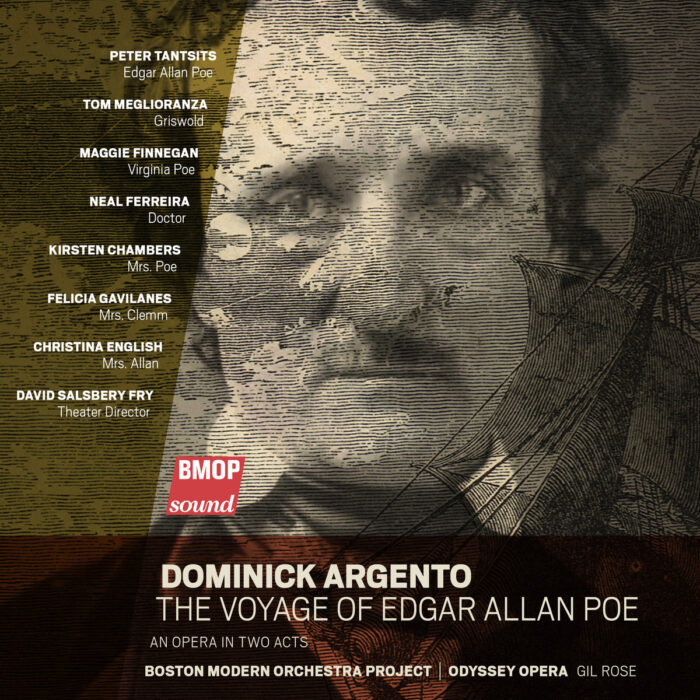
CD Review: Opera Rara’s ‘L’Ange de Nisida’
A Landmark Recording With Solid Turns from Joyce El-Khoury, Laurent Naouri, David Junghoon Kim
By Mauricio Villa(Credit: Russell Duncan/Opera Rara/ROH)
A little over a year ago, Opera Rara, whose commitment is to record unknown, forgotten and rarely performed works from the 19th century, released a reconstructed version of Donizetti’s then-never performed “L’ange de Nisida.” This world premiere recording reveals the work to be an authentic Bel Canto jewel, providing deep immersion into Donizetti’s style of composition and how he adapted his melodies to the drama.
The opera was written in 1839 for the Théâtre de la Renaissance in Paris. However, when the theater went bankrupt, the opera was left unperformed. The composer used some of the material from his unfinished work “Adelaide” but the rest of the score was a new inspiring composition. Nevertheless, as the work was never performed, he recycled about half of its music for “La Favorite”(1840), and some fragments were used for “Maria Padilla” (1841) and “Don Pasquale” (1843). That said, it is important to understand that in this period composers worked under heavy contracts and composed sometimes even four operas per season.
Therefore, it was very common to reuse material.
Since the release of this 2018 recording, “L’ange de Nisida” has since been performed at the Donizetti Opera Festival in a new critical edition that eliminates the overture in this recording and gives Sylvia a new aria that comes from an early manuscript of “La Favorite.”
Similarities to “La Favorite”
What is interesting about Donizetti’s compositions is his capacity for development and self-renewal while adapting previous material.
That said, not only does “La Favorite” share most of its music with “L’ange” but its plot is very similar, as Leone is in love with Sylvia who happens to be the king’s lover. A figure of the church is involved and disabuses Leone about his fiancé being the King’s mistress. Sylvia ends up dying while asking for forgiveness in Leone’s arms.
As most opera CD releases nowadays, this work was recorded during two concert performances which happened at The Royal Opera House in London on July 18 and 20, 2018. Despite the immaculate production and a clean balance of voices and orchestra, I did not find it appropriate that the company decided to leave the audience’s applause between numbers. In other Opera Rara live recordings, the company has only left the final applause at the end of the opera, respecting the atmosphere of a concert performance but keeping the rest of the recording clean and fluid.
Lebanese-Canadian soprano Joyce El-Khoury, sings the part of Sylvia (L’ange di Nisidia) after having appeared in other Opera Rara recordings like Donizetti’s “Les Martyrs” and “Belisario.” She has a lyrical voice which moves easily in the middle register, while possessing a vibrant sweet timbre. However, she sounds somewhat uncomfortable and strident on her few ascensions to the high register.
As in “La Favorite,” there is no opening aria for the soprano whose first appearance is in duet with Leone, “Ah! Leone, le ciel t’envoie” where her voice brightens in the middle register but with irregular results on the several A naturals and B flats that this piece contains. It might be that her voice was cold at the beginning of the performance, as she clearly grows confident in her next duet with the King at the start of Act two. Here she provides a beautiful display of high B naturals and coloratura roulades.
In this edition of the opera, Sylvia has a typical Italian multi-movement aria. In “Leone! Faut-il que l’infamie,” the soprano sings two sweet soaring high Cs in pianissimo, her voice sounding more controlled and the notes better supported than when sung forte. She interpolates some subtle but well-written variations and clean scales on the da capo of her cabaletta “ Venez! Qui vos arête,” although her few moments of coloratura suggest some lack of comfort. Once again the final high C in forte sounds pushed and uncomfortable.
Korean tenor David Junghoon Kim portrays Leone de Casaldi. A former member of the Royal Opera Jette Parker Young Artist programme, Kim showcases a solid technique which enables him to navigate the uncomfortable tessitura effortlessly, emitting solid high notes, and maintaining a fluid vocal line throughout.
This is noteworthy in his first aria”Dites-lui que mon couer l’apelle” where he throws off an effortless soaring high B flat on the line “et vos parfums.” His phrasing is elegant, from his first avowals of love to his bitter rejection of the King.
In his second aria in Act two “Quelle ivresse et que délire” the tenor has to navigate around high B flat, which is a challenging tessitura to sustain, singing a strong high C on “Ah! Silvya!” The tenor goes from strength to strength, growing in dramatic confidence as the action progresses, resulting in tremendously convincing interpretation of the final duet “Va-t’en d’ici.”
Lower Voices
Baritone Vito Priante sings the part of Don Fernand d’Aragon, who will become Alfonso XI in “La Favorite.” Here, his presence is somewhat muted with no solo aria and the character’s only appearances relegated to duets and ensembles.
Priante has a lyrical velvet voice with a fair vibrato which makes him adequate for this role and Bel Canto titles, though he does lack vibrancy in his vocalism, the character lacking in a sense of personality.
Russian bass Evgeny Stavinsky, playing “The monk/FatherSuperior” posses a sonorous and beautiful timbre, which he uses to passionate effect in arguably the most memorable performance of the entire recording. He is especially menacing and potent in “Redoutez la fureur.”
Magnificent French bass-baritone Laurent Naouri plays the buffo part of Don Gaspar, a role which suits him like a glove. Since “L’ange” is a hybrid genre with aspects of both French and Italian tradition, the role of Don Gaspar provides the work with the comical aspects, something that the French singer manages wonderfully as he colors each line to provide a truly convincing characterization of this role. Unlike most of the other interpreters, the specificity of his approach makes you almost see the performance while listening.
His French diction is completely clear and depurated to the extreme. He is especially brilliant in his opening aira “Et vous Mesdames (which will later become the “Don Pasquale’s” signature aria),” proving his ease in the higher register with a well-supported high G.
British conductor Sir Mark Elder conducts the orchestra of The Royal Opera firmly and with determination, showing authority and total musical control. There is brilliance to his sonorous approach, particularly in the arduous concertante and ensemble numbers (this opera possesses three of them). The Royal Opera chorus provide the high standards which the ensemble usually offers.
This recording of “L’ange de Nisida” marks a remarkable endeavor from the company. When one considers all the work that went into not only the recording, but the musicological pursuit, the re-orchestration of some passages, and even the composition of other lost passages, it is impossible to call this release anything but a landmark of the last few years. It also provides hope that other long-lost works by the greatest composers of yesteryear may get a second chance in the not-so-distant future.
It is a must-buy for Donizetti’s lovers, Bel Canto enthusiasts, and opera lovers in general.



